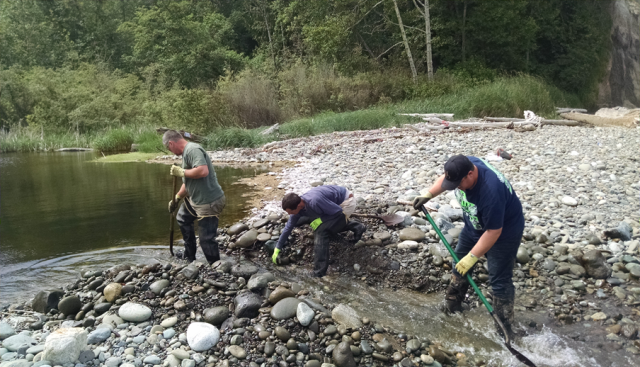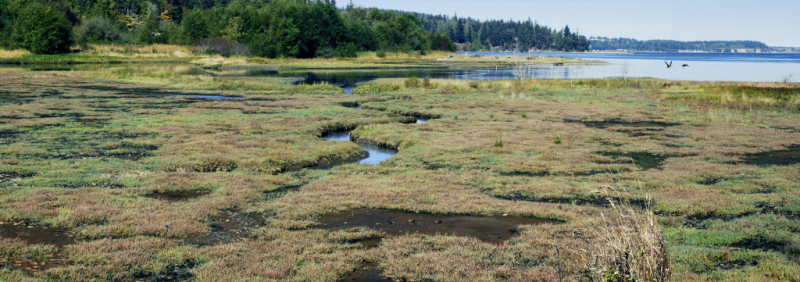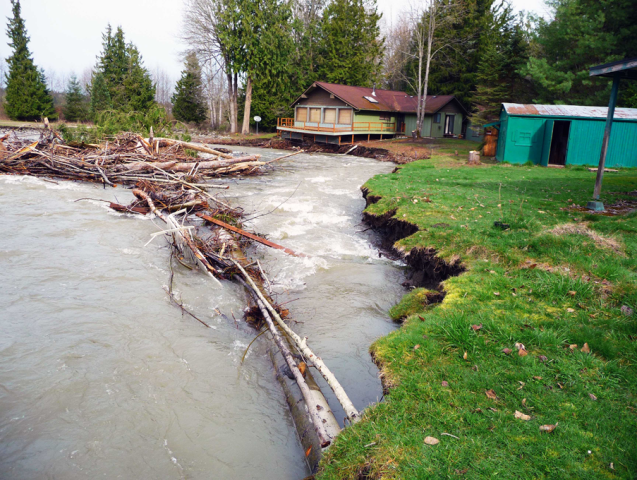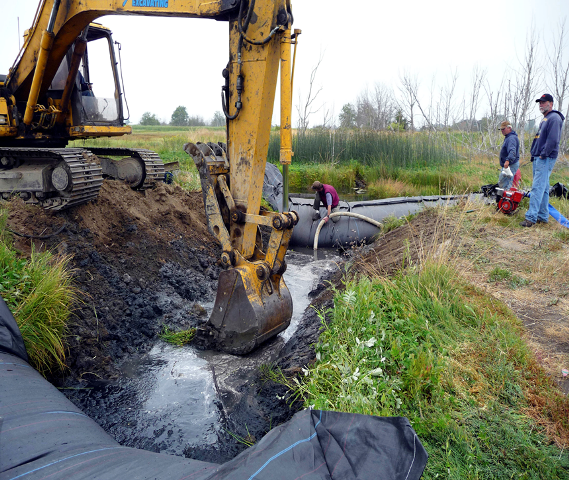
Treaty Rights & Resources
Resource Management
The Jamestown S'Klallam Tribe has maintained the right to fish, shellfish, hunt and gather. But that right is empty if there are no fish to catch, no clams to dig, no elk to hunt or berries to gather.
Our greatest natural resource concern is that the environment these natural resources live in and the habitat that supports healthy populations be protected.
If threatened, the environment must be protected to keep it in a highly productive state. If damaged, the habitat must be restored so that fish and wildlife may flourish. If natural resources are in decline, they must be improved so that future populations may thrive.

Reconnecting Siebert Creek to Save Fish 2015óDue to low water flows Siebert Creek had been cut off by a sandbar. Jamestown SíKlallam natural resources staff dig a 20 foot long ditch to free the smolts making their way to the saltwater. A female steelhead appeared from the Strait within moments to travel upstream.
In 1908, Winters v. United States determined that the 1855 treaty, setting aside small reservations of land for Peninsula Tribes, intended also for the Tribes to have an adequate supply of water. The Boldt Decision of 1974 went beyond this, and clarified that treaty-reserved rights to fishing and shellfishing included the right to protect fisheries resources and the river flows necessary to support fish habitat. As human populations increased, resources decreased and it became necessary to formally manage those resources. The Natural Resources department of the Jamestown SíKlallam Tribe has been actively involved in doing just that, and for over two decades has teamed up with other stakeholders in the Dungeness Watershed to find strategies that will help conserve water and restore the flows that have been declining in our streams over the past century.
Prior to any actual restoration project are many hours of public outreach and project planning with colleagues. Tribal staff research historic conditions to understand what a functional ecosystem used to look like and try to mimic as much of the historic conditions as possible to improve the likelihood of success. Finally, when the project is finished, it is monitored to determine how the organisms responded to the work. The images below show the changes made to Jimmycomelately Creek and Estuary in Blyn.


The beautiful Jimmycomelately estuary, 5 years after the restoration project.
The Tribeís concerted effort to partner with other community members on habitat restoration projects in the Dungeness Watershed has made a difference. The Dungeness River Management Team coordinates watershed projects and provides a forum for information exchange and negotiation. Early on in the DRMTís formation, Tribal negotiations with the local (agricultural) irrigators resulted in a voluntary agreement that the irrigators take no more than 50% of the river flow, while the Tribe helps obtain funds for water conservation (ditch piping) projects.

Development within the channel migration zone is problematic to people and habitat. The Tribe works with Clallam County to prevent this type of development but also has purchased homes in peril and resituated tenants to avoid impacts to both homes and habitat.

Habitat restoration at Meadowbrook Creek included diverting water to facilitate the removal of a large culvert by Jamestown Excavating.
To ensure treaty resources are protected, the Tribeís Habitat Program works with those agencies that have jurisdiction (permitting authority) including:
- Cities of Sequim and Port Townsend
- Clallam County & Jefferson County
- WA Department of Fish and Wildlife
- WA State Department of Natural Resources
- Washington Department of Ecology
- U.S. Forest Service
- U.S. Fish and Wildlife Service
- NOAA Fisheries
Fishing, hunting and gathering rights reserved by the Tribe in the Point No Point Treaty have been hard fought rights with many challenges to maintaining them. The Tribe continues to protect its rights to this dayÖ more than 160 years after the United States agreed that the Tribes would always have them.

